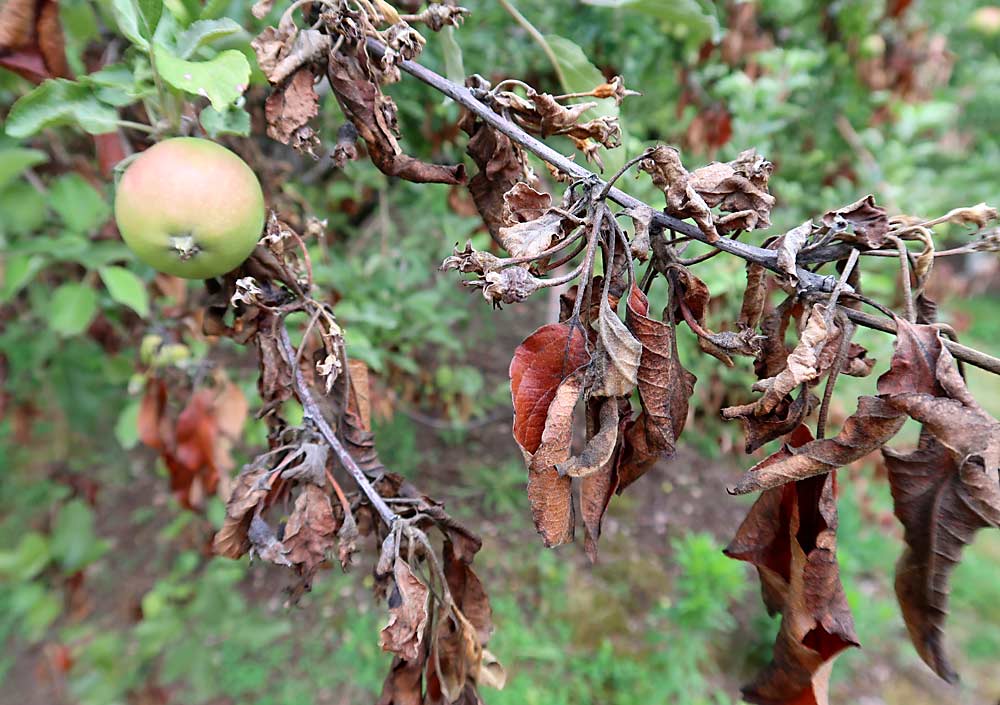Fire Blight

Scientific Name
Erwinia amylovora
Description
Fire Blight is a bacterial disease that affects apple and pear trees, causing branches and blossoms to appear scorched by fire. It is identified by the rapid wilting and blackening of blossoms and shoots, often accompanied by a bacterial ooze.
Characteristics
The disease presents as water-soaked lesions that quickly darken and spread, leading to the characteristic 'shepherd’s crook' bend of infected branches. It thrives in warm, humid conditions and can rapidly decimate orchard yields if not controlled.
Control Methods
- Organic sprays: Apply copper-based organic sprays or other approved biological treatments during bloom periods to minimize infection. Neem oil can also be used as part of an integrated management strategy.
- Cultural practices: Ensure proper tree spacing and pruning to improve air circulation. Avoid excessive nitrogen fertilization which can increase susceptibility to infection, and remove mummified fruits that harbor the bacteria.
- Preventive methods: Maintain tree health through proper watering and balanced fertilization. Prune and remove infected branches promptly, and sanitize tools between cuts to reduce bacterial spread.
- Biological controls: Employ beneficial microbes and antagonistic bacteria that suppress Erwinia amylovora populations. Insectivorous birds may help by reducing vector populations.
- Mechanical physical: Utilize physical barriers such as protective coverings during high-risk periods and remove all infected material from the orchard to reduce inoculum sources.
Natural Enemies
- Beneficial Microbes
- Antagonistic Bacteria